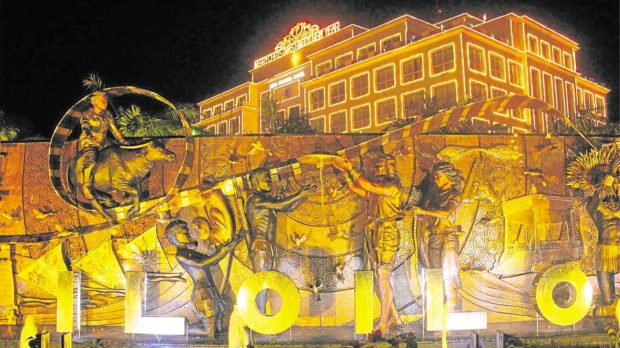On Christmas, Iloilo becomes city of lights

SWITCHED ON Since 1991, Ilonggos look forward to the annual “Festival of Lights and Music at Central” at the sprawling campus of the Central Philippine University. —PAULO BRYAN DAVID/CONTRIBUTOR
ILOILO CITY, Philippines — The major landmarks and streets here have been made more festive and meaningful this Christmas.
Most noticeable are the 1,600 colorful “parol” (lanterns) lining the national highway, city roads and district plazas. They were made by 883 inmates at the city jail at Barangay Ungka in Jaro district here.
One parol, measuring 6 feet by 6 feet, is made of bamboo and plastic “charol,” or shiny colored paper fitted with a light bulb.
About 150 business establishments joined the Philippine Chamber of Commerce and Industry Iloilo and the Zonta Club of Iloilo City II to finance the lanterns.
The Iloilo City engineer’s office and Task Force Boltahe installed the lanterns that were lit on Nov. 16 until the end of January 2020 in time for the Iloilo Dinagyang Festival and Chinese New Year.
Article continues after this advertisementAlumni spirit
At the Central Philippine University (CPU) in Jaro district, the alumni spirit is festive and generous as the CPU Alumni Association Inc. and the CPU administration spearheaded the annual “Festival of Lights and Music at Central.”
Article continues after this advertisementWith the theme “Jesus Christ, the Living Light of Life,” the switching on of Christmas lights also came with a fireworks display on Dec. 6 at the CPU field that attracted a crowd of more than 20,000 people and more than 5,000 people nightly thereafter.
The sprawling lights display covers the flagpoles, the Smile Hill, the Rose Memorial auditorium, as well as the trees and ornamental plants leading to the university church.
Lights displays
Other schools that have lights displays are the Iloilo National High School and Western Institute of Technology in Lapaz district and the University of San Agustin.
While many visitors enjoy the lights at the façade of the capitol building and the grounds near the Western Visayas regional museum, much of the attraction also comes from a sculpted mural called “Panaysayon sang Paranoblion” (The Story of Our Heritage) that depicts the rich culture and heritage of the province.
The mural that faces Iznart Street was designed by architects Victor Jacinto, Ryan Angelo Braga, Kenneth Torre and Jorge Cadiao Jr. and sculpted by architects Margarette and Albert Pampliega.